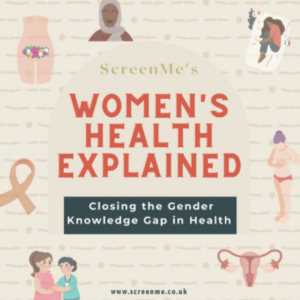What exactly is the pelvic floor?
For those with vaginas – the pelvic floor is the group of muscles that support the uterus, bladder and bowel[1].
What issues are associated with poor pelvic health?
Weak pelvic floor muscles are associated with a range of different concerns including:
- Pelvic organ prolapse (POP)
- This is where one or more of the pelvic organs descends from their original position and bulge into the vagina. This can cause pain and/or discomfort[2].
- Incontinence
- This is the involuntary loss of urine and/or faeces
- Vaginal laxity (VL)
- Is the feeling of looseness around the vagina. This often occurs prior to POP
What impacts my pelvic health?
There are a range of different reasons as to why your pelvic floor strength may decrease. This includes:
- Age
- Naturally, as you get older it is common that these muscles start to grow weaker.
- Hormonal changes associated with age at menopause are also associated with weaker pelvic floor muscles
- Childbirth
- Particularly for those who give birth vaginally. Longer deliveries and larger babies are also associated with higher likelihood of weakened pelvic floor muscles.
- Even being pregnant itself can weaken pelvic muscles, due to the much larger pressure exerted as the uterus expands and the child grows.
- Prolonged straining
- This can be due to a variety of reasons including:
- Bowel issues, specifically constipation, whereby there is sustained straining of the bowels
- Excessive and prolonged coughing
- Continued very heavy lifting
- This can be due to a variety of reasons including:
- Obesity
- Excessive weight gain can also result in a weakened pelvic floor.
How does my vaginal microbiome impact my pelvic health?
As is the case unfortunately with much of women’s health, there has been little research in to the connections and interplay between the vaginal microbiome and pelvic health. However, we shall run you down what some of the findings of recent research in this area..
Research has linked the reduction in oestrogen post-partum and during the menopause with a reduction in the relative amount [percentage] of Lactobacilli species present in the vaginal microbiome[3]. If you need a refresher on why the relative amount of Lactobacillus is important, then check out our blog on the CSTs [community state-types] of the vaginal microbiome here! But in essence, Lactobacillus serve to produce an environment which protects you against pathogens, disease and infection — so you want to have a higher relative amount of these!
It is difficult to directly isolate direct ‘cause’ and ‘effect’, but when taking a holistic, systems approach it makes sense that the vaginal environment/microbiome, hormones, and the pelvic organs themselves all play a role in the functioning of the pelvic floor muscles. [4]
For example – lower relative amounts of Lactobacillus species also promotes inflammation and are associated with a higher risk of infection, which further increases the likelihood of sustained inflammation. Continued inflammation in the vaginal environment is of course likely to have an impact on pelvic floor muscles, such as the development of PID [pelvic inflammatory disease]. For example, in a 2023 study, found that those with prolapse were most likely to have CST IV, which is characterised to low relative amount of Lactobacillus and increased bacterial diversity[5].
The implications of this for POP treatment
Research suggests that while treatment options for POP [pessary or an operation], may do well to address structural discomfort, they often are not seen to fully restore vaginal microbiome balance.
This is evident in the fact that postoperative infection remains the most common complication of surgical procedures in gynaecology. [6].
This highlights the need for both an understanding of the vaginal microbiome’s importance in intimate health, and appropriate plans that allow this to be improved and optimised alongside other treatments.
What can I do about this?
There are different ways you can improve you pelvic health including:
- Pelvic Floor Exercises – there are many different pelvic floor exercises that you can do to strengthen these muscles specifically. Just think of it as another part of your exercise routine and try to factor it in as a regular practise. These are often really simple and easy to do, and don’t require going to the gym!
- Improving your vaginal microbiome – while there is still much research to do, it is increasingly becoming clear that the vaginal microbiome plays a key role in pelvic health. This is part of the understanding that there should be a whole body, holistic approach to healthcare. It makes sense that all parts of the body work together to produce your health and wellbeing, so it is time to start taking care of all of ourselves, rather than trying to isolate each section out.
Fariba Khonsari
[1] https://www.thewomens.org.au/health-information/pregnancy-and-birth/a-healthy-pregnancy/the-pelvic-floor#:~:text=The%20pelvic%20floor%20is%20a,pass%20through%20the%20pelvic%20floor.
[2] https://www.nhs.uk/conditions/pelvic-organ-prolapse/
[3]https://www.frontiersin.org/articles/10.3389/fmicb.2022.975406/full#:~:text=The%20study%20revealed%20that%20anatomical,factors%20of%20vaginal%20microbiota%20disorder.
[4] Geng, L., Huang, W., Jiang, S., Zheng, Y., Zhou, Y., Zhou, Y., et al. (2020). Effect of menopausal hormone therapy on the vaginal microbiota and genitourinary syndrome of menopause in Chinese menopausal women. Front. Microbiol. 11:590877. doi: 10.3389/fmicb.2020.590877
[5] https://www.nature.com/articles/s41598-023-44988-6
[6]https://www.ncbi.nlm.nih.gov/pmc/articles/PMC4348594/#:~:text=Postoperative%20infection%20remains%20the%20most,seen%20most%20frequently%20%5B2%5D.







